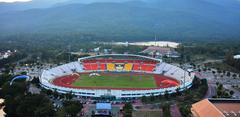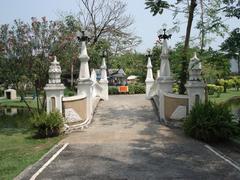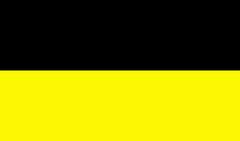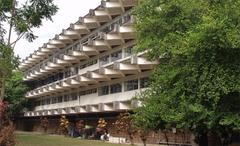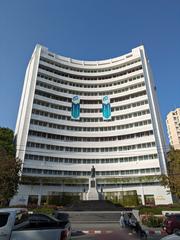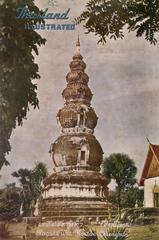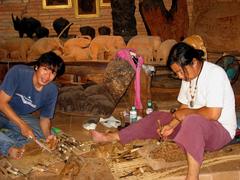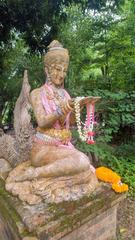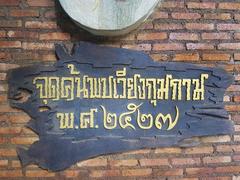Complete Guide to Visiting Wat Chai Mongkhon, Mueang Chiang Mai, Thailand
Date: 19/07/2024
Introduction
Wat Chai Mongkhon, situated in Mueang Chiang Mai, Thailand, is an emblematic temple that offers visitors a profound glimpse into the region’s rich historical and cultural tapestry. Founded during the reign of King Mengrai in the late 13th century, Wat Chai Mongkhon has been a pivotal site for the dissemination and consolidation of Buddhism in Northern Thailand (Chiang Mai Citylife). Its architectural splendor, characterized by traditional Lanna and Burmese influences, reflects the temple’s historical evolution and its significance during various periods, including the Ayutthaya period (Tourism Authority of Thailand). The temple not only serves as a spiritual haven but also as a center for cultural preservation, scholarly exchanges, and community service (Encyclopedia Britannica). This guide provides comprehensive information on Wat Chai Mongkhon, including its historical significance, visitor tips, and nearby attractions, ensuring that you have an enriching and respectful experience during your visit.
Table of Contents
- Introduction
- History of Wat Chai Mongkhon
- Visitor Information
- Special Events and Festivals
- Archaeological Discoveries
- Influence on Local Culture
- Notable Figures Associated with the Temple
- Conclusion
- FAQ
- References
History of Wat Chai Mongkhon
Origins and Early History
Wat Chai Mongkhon is believed to have been established during the reign of King Mengrai, the founder of Chiang Mai, in the late 13th century. King Mengrai, who ruled from 1292 to 1317, was instrumental in the establishment of many temples in the region as part of his efforts to consolidate Buddhism and promote cultural development (Chiang Mai Citylife).
Architectural Evolution
The architectural style of Wat Chai Mongkhon has evolved significantly over the centuries. Initially, the temple was constructed using traditional Lanna architectural techniques, characterized by intricate wood carvings and multi-tiered roofs. The main chedi (stupa) of the temple, which is a prominent feature, was built in the classic Lanna style, with a bell-shaped structure that is adorned with gold leaf. This chedi is believed to house relics of the Buddha, making it a site of great religious significance (Tourism Authority of Thailand).
Historical Significance
During the Ayutthaya period (1351-1767), Wat Chai Mongkhon served as a major center for Buddhist learning and meditation. Monks from the temple traveled extensively, spreading Buddhist teachings and engaging in scholarly exchanges with other monastic communities. Royal patronage during this period contributed to its growth and development (Encyclopedia Britannica).
Visitor Information
Visiting Hours
Wat Chai Mongkhon is open to visitors daily from 6:00 AM to 6:00 PM, allowing ample time to explore the temple grounds and take in its serene atmosphere.
Tickets and Entrance Fees
There is no entrance fee to visit Wat Chai Mongkhon, making it an accessible destination for all travelers.
Travel Tips
- Dress Code: As a place of worship, visitors are expected to dress modestly. Shoulders and knees should be covered.
- Best Time to Visit: Early mornings or late afternoons are ideal to avoid the heat and crowds.
- Photography: Photography is allowed, but be respectful of worshippers.
Nearby Attractions
- Wat Phra Singh: Another significant temple located just a short distance away.
- Chiang Mai Night Bazaar: Perfect for an evening of shopping and dining.
- Tha Phae Gate: A historic site that is part of the old city wall.
Special Events and Festivals
One of the most notable events held at Wat Chai Mongkhon is the annual Loy Krathong festival, during which locals and tourists alike gather to release floating lanterns and pay respects to the river goddess. This festival highlights the temple’s ongoing role in preserving and promoting Thai cultural traditions (Chiang Mai News).
Archaeological Discoveries
Recent archaeological excavations at Wat Chai Mongkhon have unearthed several artifacts, including ancient Buddha statues, inscriptions, and pottery fragments from the early Lanna period. These findings provide deeper insights into the temple’s historical significance and its role in the spread of Buddhism in northern Thailand (Bangkok Post).
Influence on Local Culture
Wat Chai Mongkhon has profoundly influenced the local culture of Chiang Mai. The temple’s teachings and practices have shaped the spiritual lives of generations. Monks are actively involved in community service, providing education and support to the local population. Additionally, the temple’s art and architecture have inspired numerous local artists and craftsmen (Cultural Survival).
Notable Figures Associated with the Temple
Several notable figures in Thai history have been associated with Wat Chai Mongkhon. One such figure is Phra Kru Ba Srivichai, a revered monk known for his efforts in restoring and building temples across northern Thailand. His work at Wat Chai Mongkhon in the early 20th century is particularly noteworthy (Wat Srivichai).
Conclusion
Wat Chai Mongkhon stands as a testament to the enduring legacy of Buddhism in Chiang Mai. Its rich history, architectural beauty, and cultural significance make it a must-visit destination. Whether you’re interested in its storied past or looking for a peaceful retreat, Wat Chai Mongkhon offers a unique glimpse into the spiritual and cultural heritage of Northern Thailand. Be sure to visit and explore this historic site to gain a deeper appreciation of its beauty and significance.
FAQ
What are the visiting hours of Wat Chai Mongkhon?
Wat Chai Mongkhon is open daily from 6:00 AM to 6:00 PM.
How much is the entrance fee to Wat Chai Mongkhon?
There is no entrance fee to visit Wat Chai Mongkhon.
What should I wear when visiting Wat Chai Mongkhon?
Visitors should dress modestly, with shoulders and knees covered, as it is a place of worship.
Are there any special events at Wat Chai Mongkhon?
Yes, the annual Loy Krathong festival is a significant event held at the temple.
